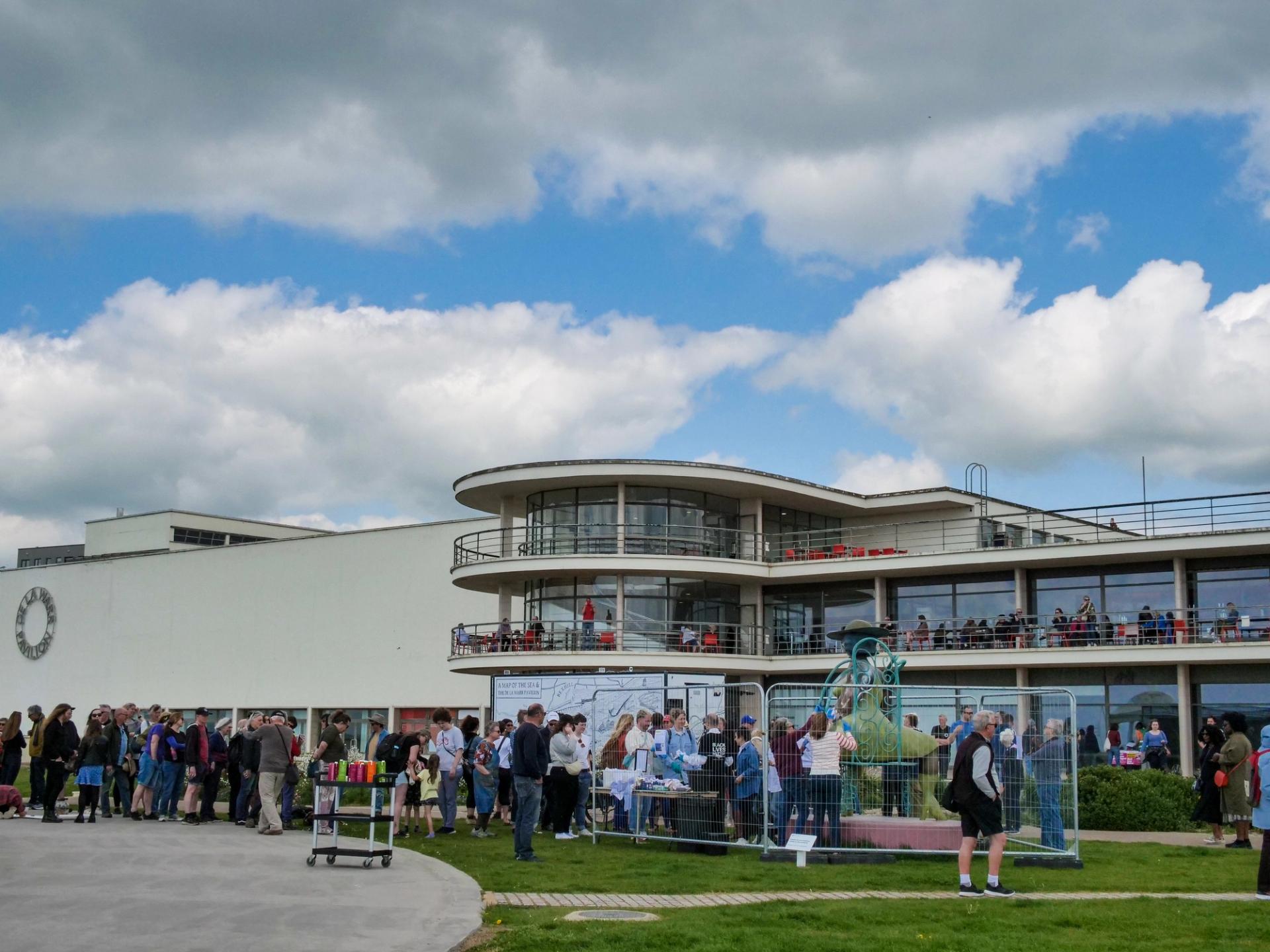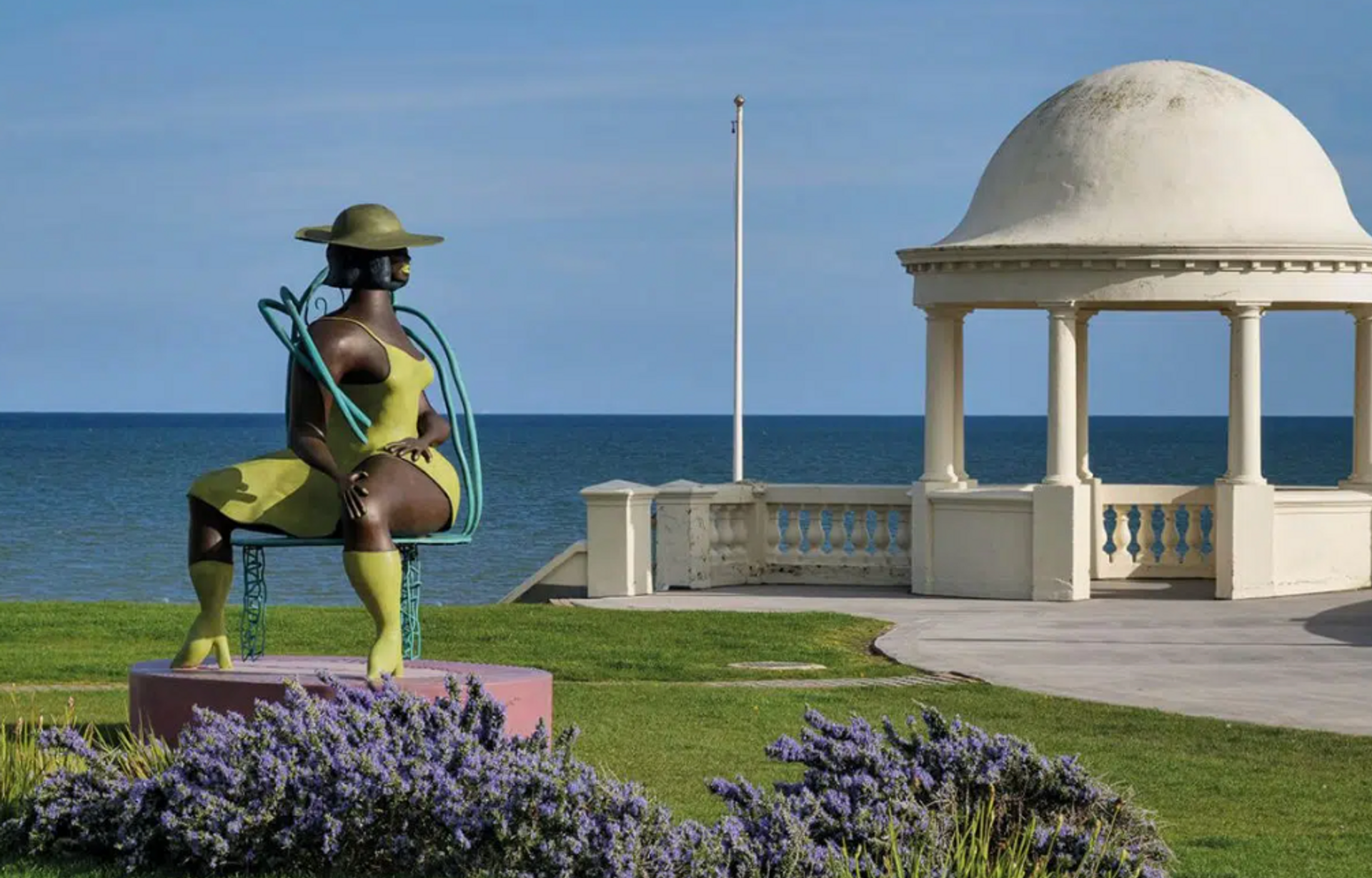Hundreds of people helped clean and restore a sculpture of a seated Black woman by the US artist Tschabalala Self which was vandalised last week (15 May). The three-metre-high bronze work entitled Seated (2022) —which has been temporarily installed outside the De La Warr Pavilion in Bexhill-on Sea on England’s south coast (until 29 October)—was defaced when “the perpetrator covered the entirety of the woman’s skin with white spray paint”, says a pavilion statement.
Volunteers were invited to “help remove the paint and bring the community together in an act of peaceful resistance”. A pavilion spokesperson says that around 300 people participated in the restoration. “We had to extend the event to make sure everyone who had been queuing could participate due to the high turnout,” she says. Seated will continue to be restored professionally and will re-open on 3 June.

Volunteers queuing to help clean the vandalised sculpture
© Lineker Photography / @lineker_photography
Self says in a statement. “I am very disheartened that my sculpture Seated was targeted and attacked by vandals. Despite my disappointment I am not surprised as Black, female—and especially Black female bodies—are often targets for abuse. Seated proudly represents the beauty of both blackness and femininity, and for these very reasons she has been harmed: covered by her assailant with white spray paint in a futile attempt to erase her colour and, in my mind, her strength.”
She adds: “I hope that the violence enacted on the sculpture illuminates the persistent issues plaguing the global West. Painting the skin of my sculpture white is an obscene act and I feel horribly for individuals in Bexhill-on-Sea for whom this event may have shocked or frightened.”

Tschabalala Self's Seated (2023), Installation view, De la Warr Pavilion, Bexhill-on-Sea.
© Lineker Photography / @lineker_photography
Seated was commissioned by the company Avant Arte and produced by the Madrid-based studio Factum Arte. “The presentation at De La Warr Pavilion is kindly supported by Pilar Corrias Gallery, London [which represents the artist],” says the pavilion website.
In a 2020 interview, Self discussed her distinctive works depicting Black and predominantly female figures, which both “embrace and confound collective fantasies and assumptions surrounding the Black female body”, according to our correspondent Louisa Buck.


